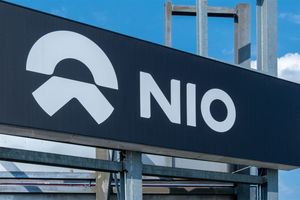In recent months, the US Federal Reserve has undertaken a series of interest rate hikes aimed at cooling the nation’s inflation rate. Beginning at historical lows of around .08% in early 2022, the effective rate has climbed to around 4.57% at the time of this writing. However, the most recent data suggests that the effort has produced mixed results, at best. As of this February, economists estimate that core inflation within the US cooled to 6%, the lowest it’s been since late 2021. However, that rate is still triple the 2% inflation target that the Federal Reserve sees as the US economy’s equilibrium rate.
Although the interest rate hikes have started to tame inflation, most experts predict that the rate hikes will continue, culminating at around 6% by mid-2023. That, in turn, will exert additional pressure on the US stock market, depressing valuations as investors price in the looming rate hikes. However, it’s worth noting that not all financial experts agree that this is the case, at least in the US market. Here’s a look at what some of the leading stock market analysts believe is in store for the US market. And, we’ll compare that with the outlook for markets in the Asia/Pacific region.
An Argument for Stability
Although the general consensus—and indeed, the US stock market’s recent performance—indicates rising interest rates will broadly depress valuations, not everyone expects a significant downturn. According to the market analysts at Schwab, the outlook for the US market predicts steady returns for the next decade, even after pricing in the interest rate hikes and the resulting GDP growth slowdown.
The reason, they argue, is that the higher rates, albeit unusual in recent economic history, are still far lower than they’ve been historical. This means it’s possible to look at earlier market epochs to look for clues as to how the market will react going forward. They also note that current market valuations reflect a certain pessimism that’s likely overblown compared to the present economic trajectory.
In other words, they expect that the market will recover at least well enough to produce annualized returns between 6% and 7.5%, depending on the sector under analysis. That’s still well below historical averages but far from the dismal returns that some analysts predicted in the wake of the Federal Reserve’s most recent meeting.
An Argument for Market Gains
Other analysts believe that the rising interest rates, instead of weighing down the market, will instead buoy it. That’s the view held by Russ Koesterich of BlackRock, who says a historical analysis of other periods of rising interest rates suggests that US 10-year Treasury bond rates and equity valuations have a strong positive correlation. If that pattern holds, says Koesterich, the stock markets should overperform expectations as rates rise.
Of course, the analysis does admit that some sectors of the market will hold up better than others. Defensive stocks—like blue-chip dividend producers—for example, will likely slump as interest rates rise. He predicts, however, that sectors like banking, semiconductors, and industrials will offer more than respectable gains in the months and years to come. That’s reflective of a broadly-stable economy that’s still generating solid if unspectacular growth rates. Therefore, investors need only apply a standard SWOT analysis to identify investment targets that should fare well in the near future, regardless of rising interest rates.
The View From the Asia/Pacific Markets
On the other hand, observers of markets in the Asia/Pacific region see much more of a correlation between their performance and real inflation in the US rather than its rising interest rates. On that score, the analysts from Kansai Tokushima Management concur that the US interest rate will peak at or near 6% within 2023. However, it’s the continuing inflation within the US that may slow down growth within export-dependent Asia/Pacific economies as American consumers tighten their purse strings.
On the other hand, they point out that the major economies in the region never saw inflation take off within their borders as it did in the US. And indeed, the central banks in nations like Taiwan, Indonesia, and Korea have signaled no further interest in raising their own benchmark interest rates any further. That should at least keep domestic demand stable, which might soften the blow of ongoing inflation in the US harming export activity.
In addition, the major Asia/Pacific economies will continue to deal with currency depreciation and higher-than-normal capital outflows while the US rate hikes continue. They’ll form the second part of twin headwinds, along with shrinking trade volume, that point toward an uncertain future for markets in the region.
The Bottom Line
The key takeaway here is that the outlook for US markets may not be nearly as gloomy as many predicted they would be when the Federal Reserve first began raising its benchmark rates early in 2022. However, the same cannot be said for markets in the Asia/Pacific region, which may continue to feel the ripple effects of inflation within regional borders as well as in the US for some time. In both cases, however, economic recovery from the worst of the pandemic-era damage continues. And compared to where things stood a little more than a year ago, the overall global economic picture remains brighter than most people believed it would be at this point.
Read more investing news on PressReach.com.Subscribe to the PressReach RSS feeds:- Featured News RSS feed
- Investing News RSS feed
- Daily Press Releases RSS feed
- Trading Tips RSS feed
- Investing Videos RSS feed
Follow PressReach on Twitter
Follow PressReach on TikTok
Follow PressReach on Instagram
Subscribe to us on Youtube






